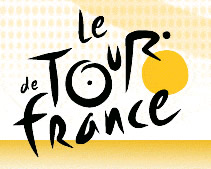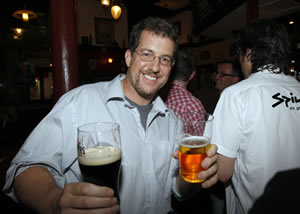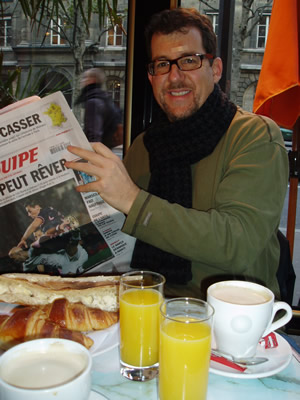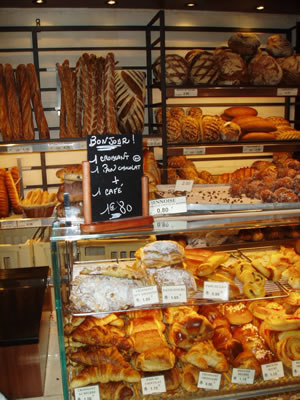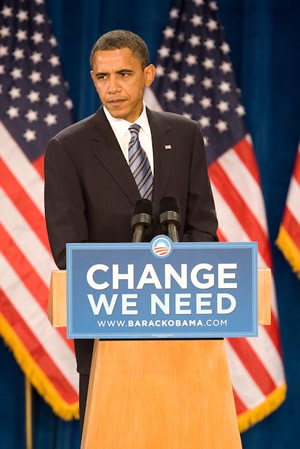Armstrong-Contador duel should divide – and liven up – Tour de France
July 3, 2009 —
The Tour de France starts Saturday in glitzy Monaco with typical pomp and fanfare worthy of cycling’s biggest race, but this year’s edition should see more behind-the-scenes intrigue than a Ken Follett spy novel.
The return of seven-time champion Lance Armstrong after four years of chasing starlettes is creating huge buzz among fans and journalists, but a cloak-and-dagger power struggle with 2007 Tour winner and teammate Alberto Contador could make the 96th one of the most mesmerizing in years.
Armstrong was the undisputed king of the Tour from 1999 to 2005, ruling with an iron fist to win an unprecedented seven consecutive yellow jerseys and absolutely dominating the sport both on and off the bike.
Now 37, Armstrong stunned the cycling world last fall when he announced his return, and now the moment of truth has arrived on whether he can reclaim his crown.
After training most of June at altitude in his new home in Aspen, Armstrong is reportedly in such good shape that most observers expect the hard-driving Texan to defy the naysayers and win for an unparalleled eighth time.
Standing in his way is 25-year-old Contador, who just happens to ride on Armstrong’s Astana team.
The whippet-thin Spanish climber was heavily favored to win the Tour for a second time – that is, until Armstrong tipped over the apple cart and announced his comeback.
There’s usually only enough room for one sheriff on the nine-man Tour de France squads, but Armstrong and Contador will be fighting not only the rest of the 180-rider field, but each other as well.
The internal power struggle could split the Astana team and perhaps open the door for other rivals to exploit, not to mention make for intriguing watching for fans.
So far, Armstrong is honing his diplomatic skills, announcing he will ride for Contador if his Spanish teammate proves he’s stronger.
Publicly, everyone on the stacked Astana team is saying “the road will decide” who the team captain is, and then ride to support them, whoever that may be.
Away from the spotlight, both Armstrong and Contador are playing a high-stakes game of one-upmanship.
Armstrong wants to win another Tour, in part to erase doubts about his legacy that has been sullied by unproven yet persistent allegations that his victories were won on something more than bread and water.
Armstrong is also using the Tour as a platform to reignite his international campaign to eradicate cancer, and some also believe to use it as a launch pad for a possible entrée into politics.
Perhaps more than anything, Armstrong simply missed the excitement of competition and wants another crack at winning before he’s simply too old.
If he does manage to win when the Tour ends July 25 in Paris, he would be the oldest Tour winner ever.
Contador, meanwhile, has already made it clear he intends on racing to win and will not defer to Armstrong.
The Spaniard was a surprise winner in 2007, taking the yellow jersey just four days from Paris when race leader Michael Rasmussen was ejected by his team because he missed pre-Tour anti-doping controls.
Contador was prevented from defending his title last year, however, because his Astana team was kept out of the race by Tour organizers, who were making the team pay for doping scandals involving two star riders.
Contador was particularly stung by the snub because he wasn’t even on Astana when the dopers were busted in 2007.
The ambitious Contador made up for missing the Tour last year by winning both the Giro d’Italia and the Vuelta a España, cycling’s other two three-week tours and joining the elite club of just five cyclists who’ve won all three of cycling’s so-called “grand tours,” a feat that the Tour-centric Armstrong never even attempted.
Adding to Contador’s motivation is the chance to do what no one could muster in seven years – beat Lance Armstrong.
The potential clash between Armstrong and Contador has the makings of a classic Tour, harkening back to some of the Tour’s most memorable battles, when teammates such as Bernard Hinault and Greg Lemond clashed in the 1980s or Gino Bartali and Fausto Coppi in the 1950s.
There’s no love lost between the pair, who’ve barely ridden together since Armstrong joined the Astana team last fall.
Whether the pair becomes arch enemies or brothers in arms remains to be seen.
And if the Tour de France wasn’t fascinating enough already.
Former Vail Daily editor Andrew Hood now lives in Spain. He will be covering the 96th Tour de France for RealVail.com. Check back daily for reports and photos.
![]() Submit a comment on "Armstrong-Contador duel should divide – and liven up – Tour de France"
Submit a comment on "Armstrong-Contador duel should divide – and liven up – Tour de France"
Ski tuning in Spain falls victim to the 'Rule of Three'
January 30, 2009 —
After living in Spain for the better part of the past six years, I’ve learned a few things about the habits and customs of these Iberians I call neighbors.
Among other things, they either drive too fast or too slow. They’re incredibly giving and open to trusted members of their inner circles, but could give a damn about someone they don’t know. They have damn good food, and eat just about anything that’s fit for human consumption, including the tails, noses, ears, knees, tongues and stomachs of most four-legged creatures.
And I’ve also discovered things aren’t terribly efficient, at least not here in my beloved León, a cultural and historic jewel perched on the northern edge of the northern meseta.
Back in the States, I can rip through a lengthy to-do list eight-deep and still be free for a half day of skiing or nice afternoon bike ride.
In Spain, the same to-do could last days, weeks or sometimes never be completed at all before items that were checked off that list are put back on it.
What might take a half-hour back in the United States converts into an all-day, patience-testing ordeal that typically leads one to drink (thank goodness the wine is very good in León).
I call it the “rule of three.” Simply put, just about anything that might be accomplished with one trip anywhere else in the western world will take three good tries in Spain.
Let me offer a few simple examples:
Earlier this week I needed to photocopy about 20 pages and get it off in the mail before lunch, easy enough? Not in León.
First, I went to my favorite copy shop across the Rio Bernesga, a five-minute stroll from my apartment. Lo siento, Andrés, esta roto! Sorry, it’s broken …
I shrugged and I went to copy shop No. 2, about a 10-minute walk into the heart of historic León, but not before stopping for a coffee and a tasty warm pastry, to fend off the winter chill, of course.
Copy shop No. 2 had a long queue. After patiently waiting, I was informed that they couldn’t possibly do my copies until after lunch, and they wouldn’t re-open until 5 p.m.
I shrugged again. That just wasn’t going to work, so I buzzed over to Copy shop No. 3. No problemo – I was out of there in five minutes – on my third trip.
By now I had the difficult decision of hurrying over to the Post Office and getting the letter in the mail before it closed for lunch, or start my daily tapas circuit of tangy bierzo wine and spicy Spanish chorizo in my favorite downtown bars.
That was the easiest choice of the week. The package could wait.
I’m having less luck with another project this week. The snow is flying up in the Cantabrian mountains and my skis badly need a tune and wax job.
Hoping to the skis worked on this week, I drove over to the sporting goods store where I’ve had my boards tuned before only to discover it is now a furniture store. Strike one.
Then I trudged between three other sporting goods stores. Two didn’t even do it and a third did, but I’d have to drop the skis off on Friday afternoon and pick them up on Monday, scuttling my weekend ski plans. Strike two.
Thinking way outside of the box, I decided to call another shop to query about ski tunes before making the trip. Yes, no problem, bring them by in the afternoon and we’ll have them ready the next day. Eureka!
I packed them back into my car this evening, drove over to the mall and hauled my skis through the shopping masses to run headfirst into yet another Spanish quirk – finding the elusive “person who knows the answer to the question.”
I asked attendant No. 1 about ski tuning. No problem, he points to a far corner of the store, ask over there. Attendant No. 2 said ski tuning wasn’t his department and told me to wait a minute while he found the right person. Attendant No. 3 finally arrives, yes, no problem on the ski tunes, $14, but we cannot possibly do it until next week because the ski tuning machine broken.
This was Strike Three and I still haven’t managed to get my skis tuned.
With all things in Spain, I’ve found the perfect solution to these cultural frustrations: head to a bar. There are lots of them and it doesn’t take three requests to get a cerveza. To pay, well, that’s another story …
![]() 2 Comments on "Ski tuning in Spain falls victim to the 'Rule of Three'"
2 Comments on "Ski tuning in Spain falls victim to the 'Rule of Three'"
tboyd — February 4, 2009
Sounds a bit like Italy my friend. Have a red wine on my behalf at your next tapas session...
elyn — June 27, 2009
Hah! We're living in Sahagún, a short train trip away, and I know JUST what you mean! At the moment, I'm looking for a new backpack--but only found the fishing/hunting shop on Calle Rua and Yorda Sporting goods on León. Help! Seems like there must be more shops? Looking forward to your reply-- Elyn
![]() Submit and read more comments on "Ski tuning in Spain falls victim to the 'Rule of Three'" now!
Submit and read more comments on "Ski tuning in Spain falls victim to the 'Rule of Three'" now!
10 Ways to Save in Paris (or any other big European city)
November 20, 2008 —
The world economic crisis might have a silver lining for lovers of European travel.
Two macro-economic shifts are having a positive effect on anyone looking toward a fall trip across the Atlantic.
With the sudden drop in both oil prices and the euro, the fall of 2008 is a great time to fulfill those European travel dreams that might have been on hold as the euro soared toward 1.60 to the dollar this summer (it’s now at a two-year best against the euro, floating around 1.25 to the dollar).
And with oil prices back down around $65 a barrel, there’s a flurry of last-minute flights to Europe that are once again affordable.
And with Barack Obama headed to the White House, the French no longer hate the Americans for just being born there.
I just returned from a five-day trip to Paris and found some ways to cut some corners on expenses that might make the trip a little easier to digest. Paris doesn’t have to be any more expensive than a trip to any major city, especially if you’re a little creative.
Here are 10 suggestions to save greenbacks in Paris:
1. Museum passes: Most big cities will offer multi-day passes that offer major discounts against individual entry fees on museums. In Paris, it’s appropriately called the “Paris Museum Pass” and offers free multi-entry to more than 60 museums and monuments, including the popular Louvre, Orsay and Sainte-Chapelle. If you’re a museum buff and plan on hitting several, it’s worth it because most museums run between $8 to $18 euros per adult, per entry. Adult two-day passes start at 30 euros (about $38) per person.
2. Skip Hotel Breakfast: Unless you’re staying at a bed and breakfast or unless it’s otherwise included in the price, most Parisien hotels do not include breakfast with the hotel room price. Hotel staff will certainly try to push breakfast, usually between $9 to $18 euros per person. It’s cheaper and more adventurous to skip the hotel breakfast and instead take your café au lait and croissant at a local cafeteria. A basic breakfast that includes coffee, croissant and baguette along with butter and jam usually runs between $6 and $9. Most hotels don’t offer much more and charge up to double the price.
3. Metro pass: Forget expensive taxis in Paris and hit the famous Metro subway system instead. At 1.80 euro a ride, it can get expensive if you’re jumping on and off all day. Instead, buy a 10-ride pass for about $12 and save a little there. They can shared between two people (run it through the machine, walk through the gate and pass it back). For short trips, however, it’s worth it just to walk. It’s not only free, but it saves you the sweat equity of trudging up and down the endless flights of stairs below ground.
4. Rent bikes: Better than the metro and more fun is renting bikes. Paris now boasts an incredible system of free to very cheap bike rentals with check-in stations throughout the city, but they’re only available to Paris residents or if you can somehow manage to get a French-issued credit card. Instead, tourists can rent decent-quality bikes near a city-operated rental shop near Les Halles for about $9 all day. It’s a great way to get around and it’s cheaper than taxis.
5. Search out menus: Never buy anything a la carte in a Parisien restaurant unless you’re a fool or ready to pay an arm and a leg. The best bet are the fixed menus that just about every restaurant will offer. Typically, there is a selection of three or four starters and three or four seconds. Some will include dessert and coffee, but almost never wine or drinks. We found a great restaurant in Saint Germain (Vins et Terroirs, 66 rue St. André des Arts) that offered a great three-course dinner menu for 19 euros. We bought a 24-euro bottle of Saint-Emillion and got out of there fat and happy for 62 euros.
6. Rent an apartment: If you visiting for a week or more or have a family and want more than one room, it could be worth it to rent an apartment instead of staying in a hotel. Check out rental agencies (such as www.rentparis.com) or check out Craig’s List Paris for studios and one-bedroom starting at 75 euros a night. The added advantage of having a kitchen can help save money, especially on things like breakfast and beers
7. Off-season: Paris in the heat of summer is no fun, unless you like being packed onto the observation deck at the Eiffel Tower with 400 of your compatriots from Wisconsin. To discover what Paris was like before the advent of budget airlines, visit during spring or fall. Prices drop during the shoulder seasons, especially with hotels and restaurants. We went to Paris in late October and discovered a different city. There were only handfuls of tourists – as opposed to entire battalions – at such sites as Notre Dame or Montmartre and we felt like locals strolling through Saint-Germain and La Marais.

8. Don’t forget the picnic: Packing your own lunch is one sure-fire way to save money. Those delicious French bakeries are the best place to load up for a gourmet lunch on the cheap. You can buy ready-made baguette sandwiches and salads with a pain au chocolate for dessert for about $10 per person. Besides the Champs de Mars below the Eifel Tower, my favorite place for that perfect Parisian picnic is the small park on the western end of the Ille de la Cité, just below the Henry II statue off Pont Neuf.
9. Free stuff: Even in Paris, walking and breathing are free. Most tourists seem obsessed with packing in as many museum, churches and monuments as they can, but the real beauty and charm of Paris isn’t found at its famous sites. Instead, grab a good map and just start wandering. Perhaps more than any city in the world, Paris is literally a living museum. Skip the Champs-Elysées and instead stroll beyond the Jardin du Luxembourg in the sixth or in the old Jewish neighborhood in La Marais in the fourth. There are also dozens of free museums and sites in Paris as well, including the fascinating Musée de l’Histoire de Paris-Carnavalet in La Marais (23, rue de Sévigné), just west of Place des Vosges.
10. Happy hour: As much as French like to deride America, they seem to secretly love everything they so publicly loathe. I’ve never seen a McDonald’s so crowded as just about anywhere in France than at lunchtime. One of the finest American institutions has arrived in Paris with aplomb (and I’m not talking about Starbucks). In just the past few years, Parisian bars have embraced the concept of happy hour with gusto. Between 5-9 p.m. throughout the city of lights, drinkers can wallow in the joy of affordable beer and drinks. Bars offer either two-for-one or upsales on pints that usually go between 3.50 to 5 euros a pop, well below the normal asking price of $10 a draft beer come prime time.
![]() 4 Comments on "10 Ways to Save in Paris (or any other big European city)"
4 Comments on "10 Ways to Save in Paris (or any other big European city)"
Glenn — November 21, 2008
I agree with Andrew's article. Coming to Europe is starting to make sense again and we're seeing many Americans in Paris this fall. They are eating in the less pricey restaurants and many are renting apartments. We met people tonight who are staying in a Notre Dame apartment with Rentals in Paris (www.rentals-paris.com) and they said they're enjoying it. They got a great deal on airfare last minute, and the apartment is saving them a bundle, so overall their trip is not costing an arm and a leg. They even told us that they were doing outlet shopping in a small town outside of Paris (La Vallee) which sounds like fun too. Bring back the Americans; Paris needs them.
Brian — November 21, 2008
Funny, I'm seeing articles everywhere about apartments in Paris. We rented one for the first time last winter (also with Rentals in Paris: www.rentals-paris.com) and loved it. It was a two bedroom apartment located at the world famous Place des Vosges in the Marais, and it was the best place we've ever stayed at in Paris. We were there for work so we ate out all dinners and lunches, but just having the kitchen for breakfast and COFFEE was excellent. The apartment was about 6 times bigger than our usual hotel suites and cost about half the price. All in all, it was great. I'm glad to see that others are doing the apartment thing in Paris too. Try www.rentals-paris.com since they are very well run by Americans in Paris.
![]() Submit and read more comments on "10 Ways to Save in Paris (or any other big European city)" now!
Submit and read more comments on "10 Ways to Save in Paris (or any other big European city)" now!
Obama fiebre grips Europe
October 28, 2008 —
Spain is a great place for news junkies.
It’s not so much how often you can feed the monkey in Spain’s five major national dailies and three national sport dailies, but how you read them.
Spain’s lively newspaper industry is blatantly partisan. El País, Spain’s New York Times, is widely regarded as the official mouthpiece of the current Zapatero government, though its editorial writers would be loath to admit it. If you want the view of the opposing Partido Popular, read ABC.
That tendency of a shaded news coverage spills over to the tabloid-esque sports media. If you love Real Madrid, look no further than MARCA for the latest trade rumors, but if you want the latest on Futbol Club Barcelona, pick up El Mundo Deportivo.
Taking sides isn’t wrong, it’s expected. Crossing the line of objectivity is what it’s all about in Europe. Writers are expected to have opinions, voice and style that have long died on the vine in the bland American corporate journalism that’s taken root the past few decades.
So when Spain wakes up to café con leche and churros, they know to read between the lines in at least a few dailies to get the real picture.
One story that caught my eye last week was a small item in El Mundo about a gathering of Spanish protesters in Madrid to rally against the United States.
America’s reputation has dropped faster than the dollar ever since ex-president José María Aznar sided with President Bush in the hugely unpopular war against Iraq.
But this story wasn’t Spaniards protesting against anything American. Instead, it was a rally in support of Barak Obama.
Not that Europeans would be interested in world politics should come as a surprise.
European news is much more international than what’s dished out by American-centric media, but the fact that a few hundred madrileños would turn out on a Saturday morning to carry signs and express their support for a U.S. presidential candidate was extraordinary.
Media coverage in Spain of the U.S. elections is impressive. All the dailies have full-time correspondents covering the campaign. The evening news is full of reports from Obama and John McCain’s campaign.
Obama is widely admired in Spain and everyone across the continent is hopeful an Obama presidency would see a return of normal relations between the United States and Europe.
Under Bush, relations have strained to the breaking point, so much so that Spain’s president Zapatero isn’t even on speaking terms with Bush, who’s still peeved that Zapatero pulled Spanish troops out of Iraq after he won elections in 2003.
During the darkest days of the Iraq war, when Donald Rumsfeld was lambasting “old Europe” for not having the spine to back its misguided war into Iraq, the Atlantic Ocean once against seemed like a giant gap between two diverging continents.
My Spanish friends simply cannot understand how Bush not only won his first term, but how he managed to win a second term after bungling just about everything in the first four years (I like to remind them that Bush stole two elections).
They cannot understand how Americans accept that there isn’t any universal medical coverage. Why there’s a death penalty or why there’s so much poverty in the world’s richest economy. Over here, just about everyone agrees that such things as medical coverage, strong unions and restrictions on guns are not only good policy, but just plain common sense.
The depth of interest in the upcoming U.S. elections has reached unprecedented levels following the latest financial crisis, which is spreading to Europe and causing economic pain across the continent.
Nearly everyone points to America as the source of the problems and they see Obama as a way toward a new direction.
Almost everyone complains that they cannot vote next week. What happens in Washington, D.C. has major impact not only Main Street but on the Gran Vía as well.
![]() Submit a comment on "Obama fiebre grips Europe"
Submit a comment on "Obama fiebre grips Europe"


